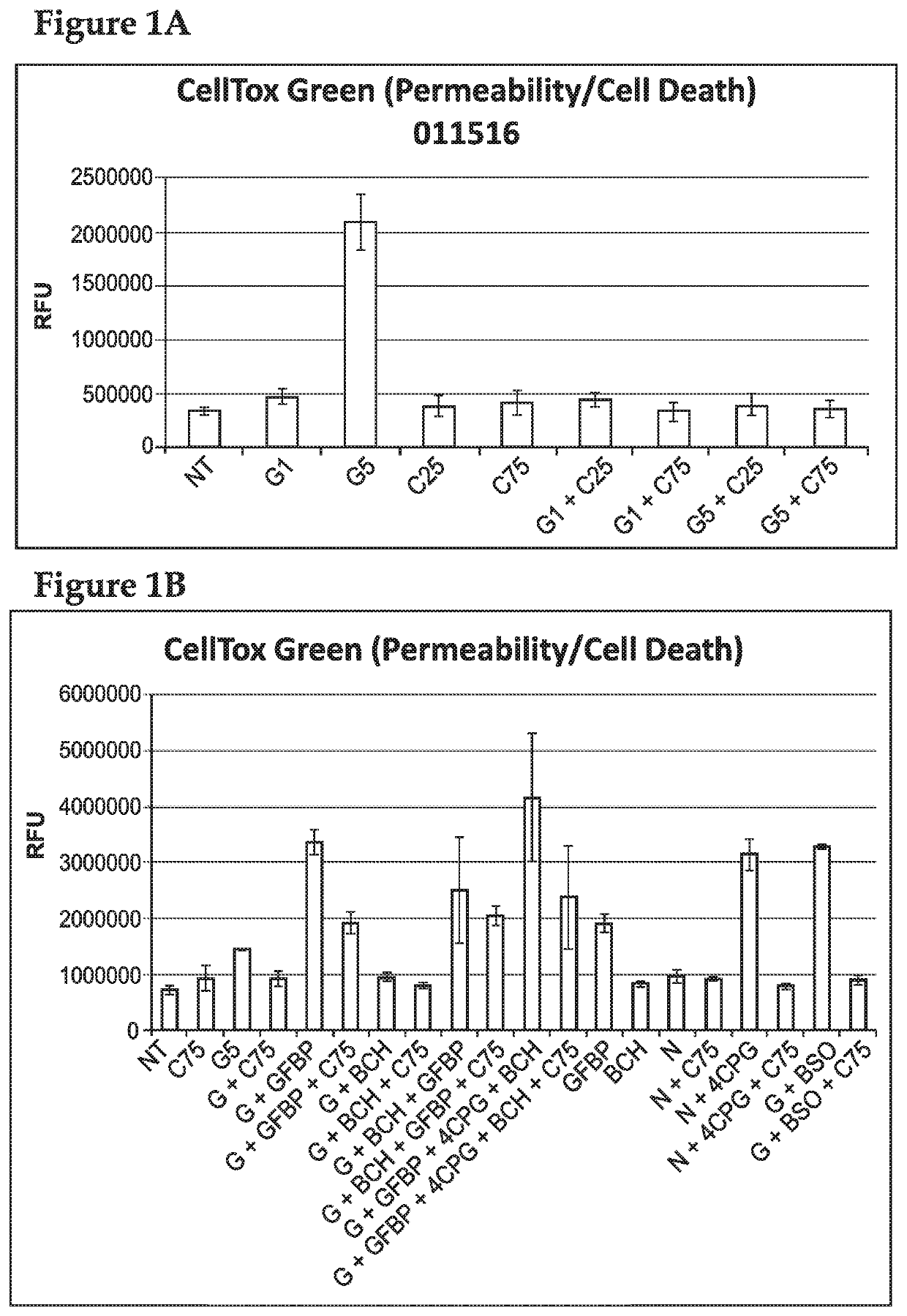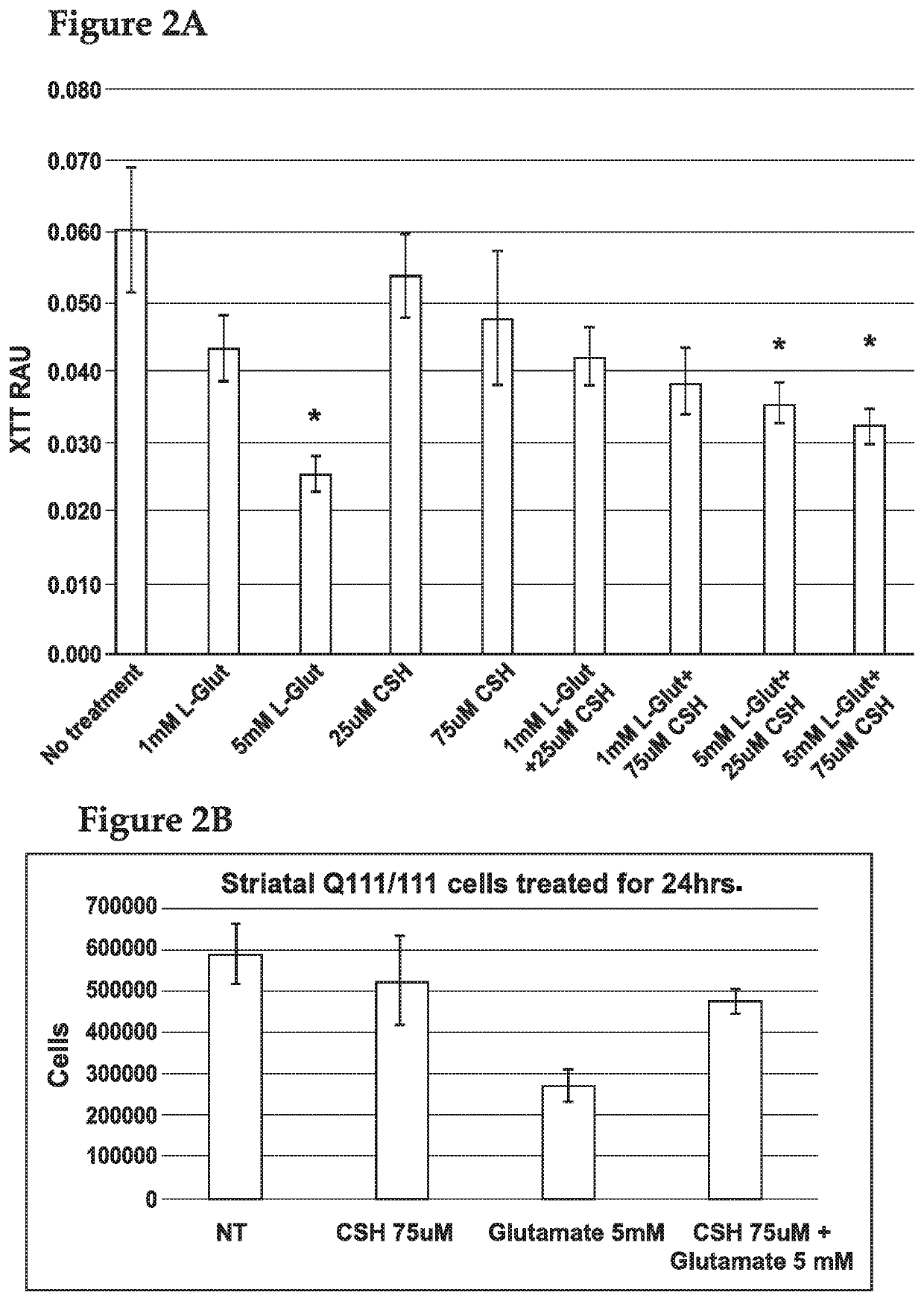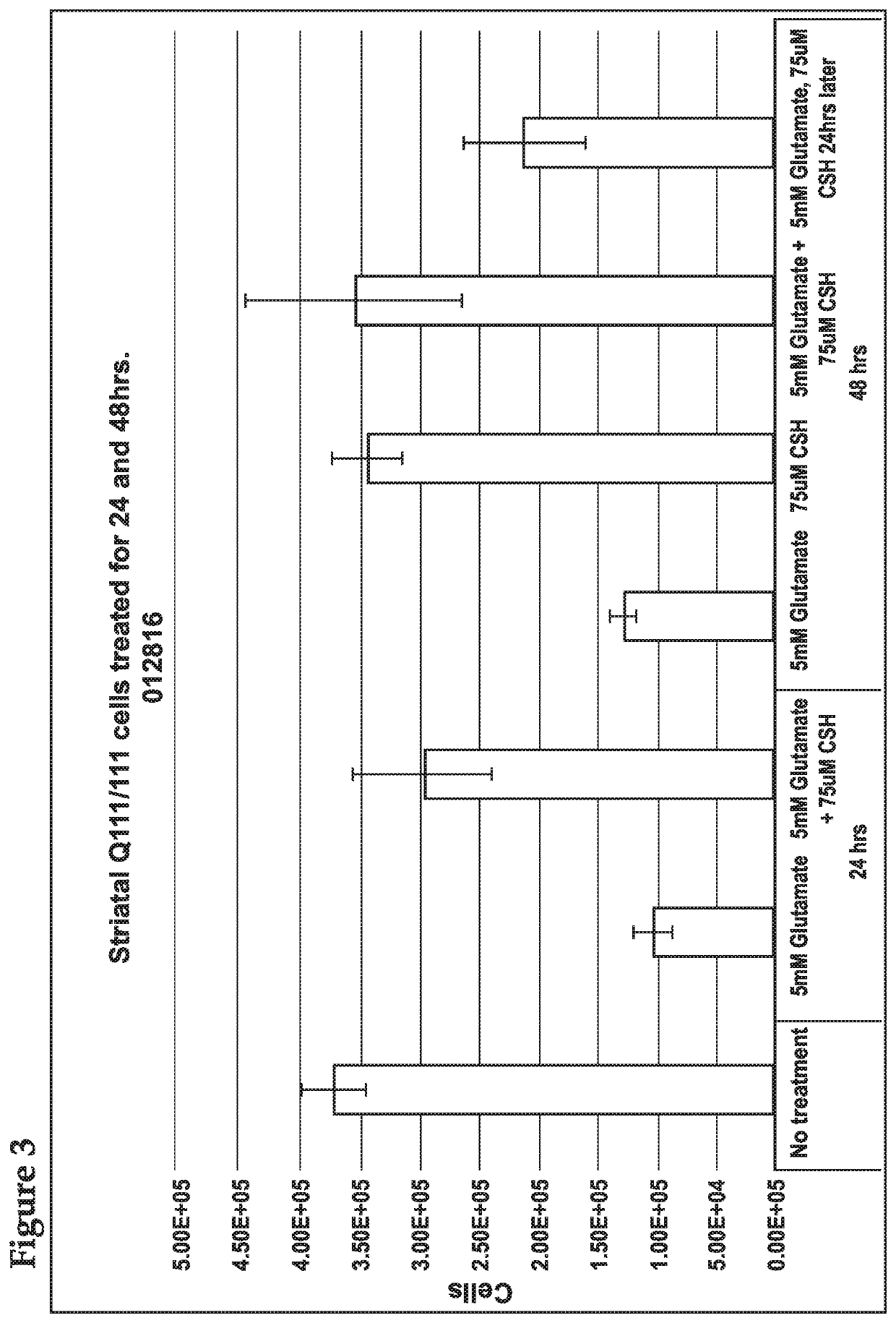Methods of Treating Excitotoxicity Disorders
a technology of excitotoxicity and methods, applied in the field of methods for treating excitotoxic disease, can solve problems such as progressive neurodegeneration, and achieve the effects of increasing the activity of brain derived neurotrophic factor (bdnf), increasing the level of bdnf, and increasing the activity of bdnf in the cell
- Summary
- Abstract
- Description
- Claims
- Application Information
AI Technical Summary
Benefits of technology
Problems solved by technology
Method used
Image
Examples
example 1
Cysteamine Reduces Gutamate Cytotoxicity in Striatal Neurons
[0152]In order to assess the effects of cysteamine on glutamate toxicity, cysteamine was administered to a Huntington's Disease modified cell line.
[0153]All cell culture methods were carried out under sterile conditions in a class II laminar flow cabinet. The immortalized cell lines, ST HDH Q111 / 111 and ST HDH Q7 / 7 were derived from striatal neurons from HdhQ111 / Q111 and HdhQ7 / Q7 mice (expressing 111 and 7 glutamine repeats, respectively) and were purchased from Coriell. Cells were cultured in Dulbecco's Modified Eagle Medium (DMEM) supplemented with 10% FBS, 4 mM L-alanyl-L-glutamine (Corning Glutagro), and 400 μg / mL G418. Cells were grown at 33° C. in a 5% CO2 incubator. All experiments used cells with passages lower than 14.
[0154]Cells were plated at a density of 8×103 or 1.2×103 cells / well (CellTox or XTT, respectively) in sterile 96 well plates (100 uL). Cells were allowed to adhere overnight at 33° C. in a 5% CO2 incu...
example 2
Assessment of Cysteamine on Gutamate Cytotoxicity In Vivo
[0160]In order to test the effects of cystemaine in combination with an inhibitor of the xc− antiporter, animal models of neurodegenerative diseases are employed.
[0161]For example, R62 Huntington's Disease mice are administered cysteamine at 225 mg / kg, 100 mg / kg, or 50 mg / kg daily for 7 days, alternatively in combination with sulfasalazine or another xc− inhibitor, at 50 mg / kg, 100 mg / kg, 150 mg / kg or 250 mg / kg daily or as determined to be effective, and measurement of brain activity and other readouts of Huntington's Disease are determined. Mice are also treated for 8 weeks with cysteamine plus xc− inhibitor and various neurological tests performed during the treatment period, including, rotarod test (4, 6, 8, 10 weeks), neurological index (11 wks), open field test (4, 6, 8, 10, 12 wks), 2 choice swim test (9 wks), gait analysis (11 wks) and MRI (12 wks). Biomarkers such as BDNF levels, and neuronal or glial cell markers are ...
PUM
 Login to View More
Login to View More Abstract
Description
Claims
Application Information
 Login to View More
Login to View More - R&D
- Intellectual Property
- Life Sciences
- Materials
- Tech Scout
- Unparalleled Data Quality
- Higher Quality Content
- 60% Fewer Hallucinations
Browse by: Latest US Patents, China's latest patents, Technical Efficacy Thesaurus, Application Domain, Technology Topic, Popular Technical Reports.
© 2025 PatSnap. All rights reserved.Legal|Privacy policy|Modern Slavery Act Transparency Statement|Sitemap|About US| Contact US: help@patsnap.com



